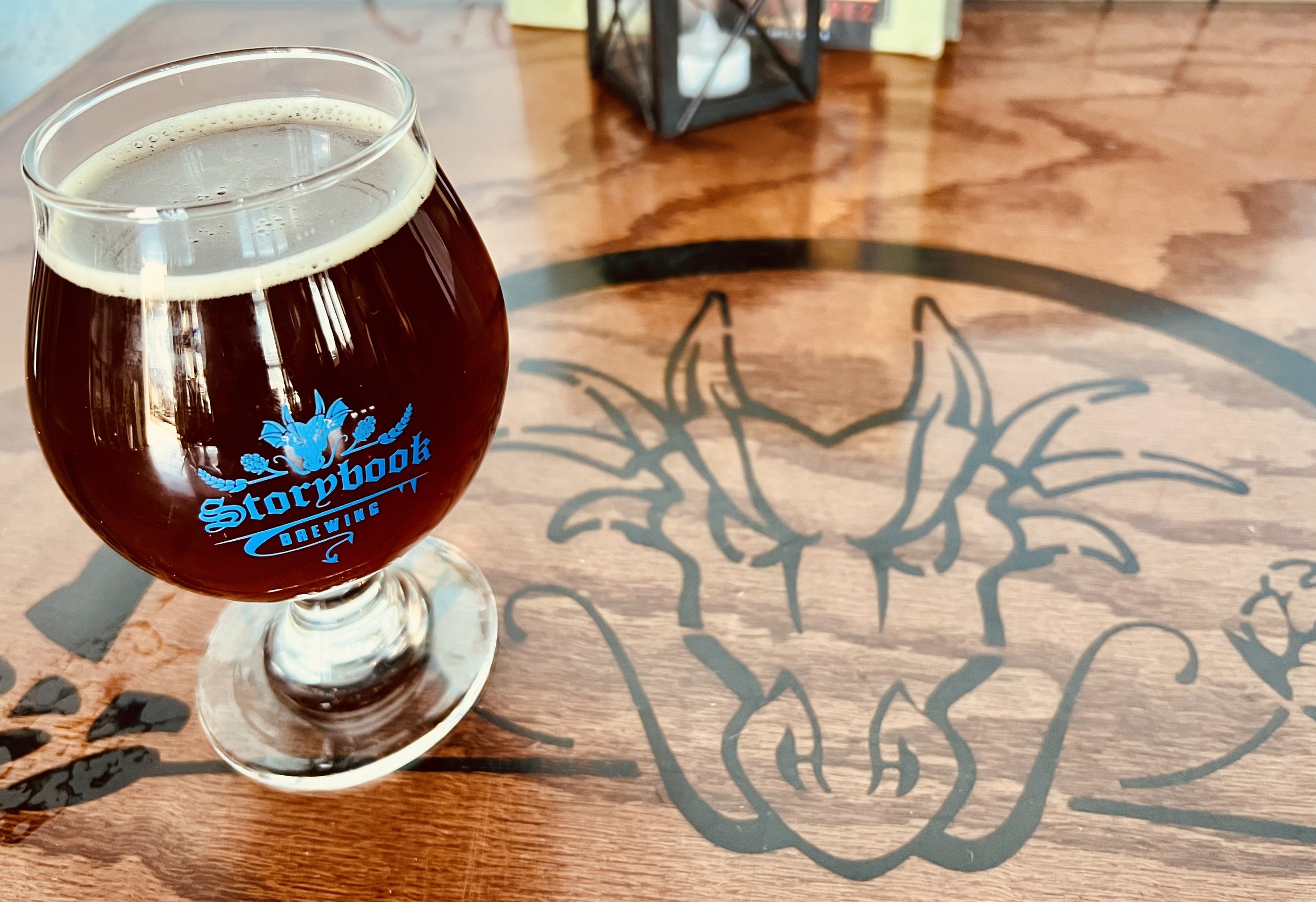A Peek into the Pilgrimage of Pints
"From man's sweat and God's love, beer came into the world" -Saint Arnold of Metz
If you’re new to Feast of Saint Arnold, you may be asking yourself “who is this Metz guy?”
Saint Arnold of Metz was born in 580 in Austrasia and later became the 29th Bishop of Metz. During a plague outbreak, St. Arnold preached about the dangers of water. He encouraged everyone to drink beer for its healing properties and when they did, the plague disappeared. Even if a bit misguided, it’s hard to argue the man’s logic. He eventually retired to the mountains alone. One can only guess he drank a lot of beer during his solitude.
We truly cannot get to the feast without a pilgrimage. More specifically, we here in the Springs get to drink a lot of beer before we go to a festival to drink a lot of beer. Think of it like a self-paced pub-crawl where you can win more beer.
Many of the breweries are making beers that Saint Arnold would have brewed, which is a fun concept and an extra layer of difficulty to be creative. I love the breweries that have taken the time and effort to get into the festival’s theme and brew something truly unique and fun. You’ll find many beers that are unique or rare styles—some brewers really went all out—a testament to their creativity and skill.
It’s not every festival where you can find saisons, sours, gruits, and farmhouse beer all under the same roof, but that’s what makes Feast of Saint Arnold so unique. We can all agree that these beers probably wouldn’t have tasted all that great way back in St. Arnold’s day, but it was safer than drinking water!
Fortunately, beer has come a long way quality-wise, allowing the festival’s brewers to put modern spins on these historical styles to ensure we have a wonderful array of stories and unique beer. Don’t miss out on the opportunity to try these fun beer styles!
Beers
I had the chance to follow the Pilgrim’s path for 8 of the 19 brewery stops (the 20th is 3 Hundred Days of Shine in Monument), and had some wonderful conversations with many of the brewers who created these unique and interesting beers.
Nano 108 | Farmhouse Rye Saison “Seat at the table”
Keith from Nano 108 was wonderful company while I drank his pilgrimage saison. He is passionate about his craft and clearly put a lot of thought into this beer. His hard work paid off as this was a unique and delicious beer. Despite coming in at 7.3%, it is incredibly light, drinkable, and most importantly—tasty. If it were up to me, I’d say to head to Nano 108 and start your pilgrimage off right!
“Did St. Arnold earn his sainthood? How does any brewer earn his “seat at the table?” There was no set yeast strain, so it’s possible brewers were getting yeast from multiple sources back then. Tons of flaked rye went into this beer which was the most common cereal grain from late 12th century to 14th century. Ironically, this is supposed to be plague resistant, but it was later suspected that rats were eating the rye and causing the plague. ”
Trinity | Flanders Red Ale
“The kind of beers brewed back in St Arnold’s time would have been with local ingredients. Saint Arnold had spent time living and brewing in Flanders and I believe he would have brewed with the ingredients of the Flanders region. Flanders was known for this wild fermentation red or brown ale so the thought of Saint Arnold brewing a Flanders red with the people of Flanders before a Flanders red was invented seems highly probable. We used a yeast strain specifically made for wild fermentation Flanders, malt and hops from Belgium and Germany, and French red wine-soaked oak chips.”
Urban Animal | Tart Farmhouse Table Beer
“I would imagine most of the beer available during St. Arnold’s life would have had a certain amount of tartness to it due to wild yeasts and a lack of proper sanitation practices. I went with 4% ABV because I think that lower ABV beers were probably the norm…and they still needed to remain upright in order to get their work done. Black currants were available in the region where Saint Arnold lived. I don’t think people would have thrown perfectly good fruit into a beer back then, but to be honest, the beer back then probably didn’t taste all that great compared to what we have now! ”
JAKs | Bière de Garde
“French for ‘beer of keeping,’ this moderately sweet, copper colored farmhouse ale is the long lost cousin of the Belgian saison. The pioneers of this style decided to highlight malty notes of biscuit, stone fruit, and toffee, rather than the spicy funk of their neighbors to the north.”
Batch Slapped | Norwegian Kornøl “Gjærkauk”
“How did Saint Arnold end up in Norway? Come to the feast for full details! 3 pounds of juniper berries and smoked malts went into this unique, no-boil farmhouse ale. Fun fact: brewers in Norway used to scream while pitching the yeast to ward off supernatural creatures that may spoil the beer. Jordan and crew did, in fact, scream during pitching so you can rest easy knowing they have warded off nefarious, supernatural beer spoilers. ”
Bell Brothers | Historical Gruit
“Saint Arnold would’ve brewed a gruit because, unlike beer brewed with hops, the gruit is an herbal tonic that turns undrinkable water into a healthy thirst-quenching beverage. Infused with a special blend of herbs and spices, it would stave off the plague’s symptoms, keep both the common man and the cleric well enough to attend their duties, be that to the lord of their region or God on high.”
Peaks N Pines | Amber Lager “Czech Yes or No”
Low ABV of 4.7% sticks with the style and the theme of St. Arnold beers. Caramel and honey characterize this easy drinking beer.
Storybook | Belgian Dubbel
This was biscuity, toasty, and delightfully balanced. Definitely hit up Storybook as one of your stops on the pilgrimage.
Pilgrimage Map
Sign up for the pilgrimage today, download the cartogram, and start drinking. A beer at a pilgrimage brewery will give you a signature/sticker on the cartogram. 10 signatures is guaranteed admission, 15 signatures is 50% off admission, and all signatures will be 50% + a 2023 pint glass. Pilgrimage ends on June 9th so you still have time to get them all!
Check out these other breweries on the pilgrimage: OCC Brewing, Colorado Mountain Brewery, Bristol, Red Swing Brewhouse, Bell Brothers, Goat Patch, Local Relic, Mash Mechanix, Whistle Pig, Red Leg, Dueces Wild, and Pikes Peak Brewing Company. In case you need a momentary break from drinking beer, 3 Hundred Days Distilling is also on the pilgrimage so probably a good idea to have a cocktail as well. Statewide and regional sponsors such as Avery, Oskar Blues, and Living the Dream will be at the festival as well.
Do you love old historical beers, brew beer at home, and want to compete like the pros? You’re in luck. There are two homebrew competitions – one is open to all styles and the other is a “What Would St. Arnold Brew?” The latter requires a back story or justification for why Saint Arnold would brew your beer, so you can get creative! Winners will be announced the day of the festival.
More Information
Feast of Saint Arnold website: Feast of Saint Arnold
Follow event updates on Facebook: FoSA FB
How to become a sponsor: Sponsor Info
Homebrew Competition: Homebrew
Proceeds benefit: Westside Cares



